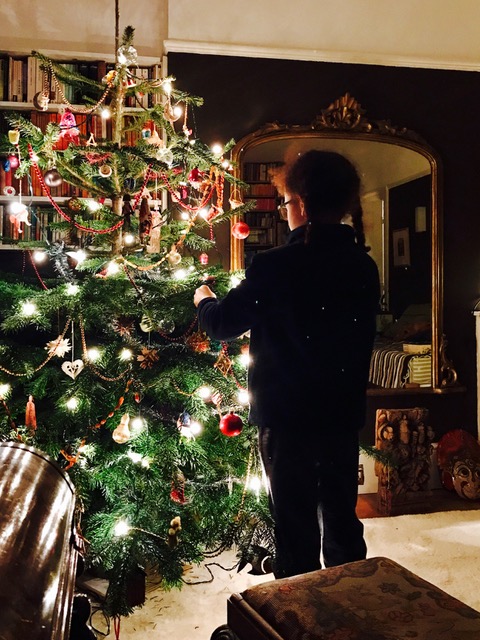
One of the first things I learnt about R, when he became our lodger, was that he loved Christmas, and especially Christmas trees. My son was five years old then and R, having recently failed to get tenure and me having recently become a single mother, we were both on the lean side financially. Which is why we made our own decorations.
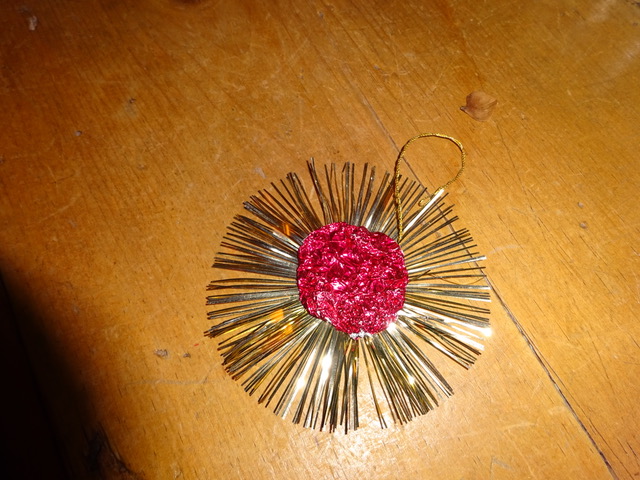
We brought petals in from the garden, made strings of cranberries and popcorn and golden sultanas, pasted children’s drawings onto bits of cardboard and filled every dark hole with a glowing orange tangerine, suspended on sewing thread or, when we ran out of these, with gaudy Quality Street toffees which led to the tree rocking dangerously as small children made a bee-line for them. To these home-made devices was added one shop-bought ornament: a very small green felt sock, covered with glitter.
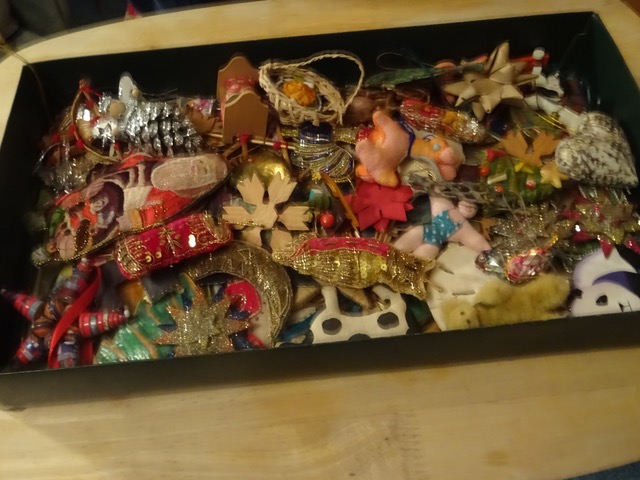
All but the edible still survive.
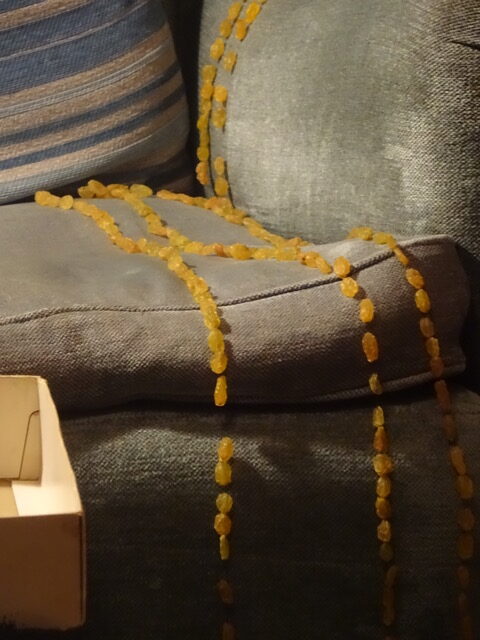
On his first return from Carlisle, PA, where he had been to visit his parents, R brought a box of ornaments dating back to his own childhood: little angels in crescent moons, metal fruits, glass balls. And every time we went anywhere over the next forty years we brought something back with us: shiny metal baubles from Mexico; from Moscow, a silver pasteboard parrot; seaweed from Pacific Valley; lace from a sleepy little town in Czechoslovakia where we didn’t know everything closed early on New Year’s Eve and had nothing to eat except a bar of chocolate.
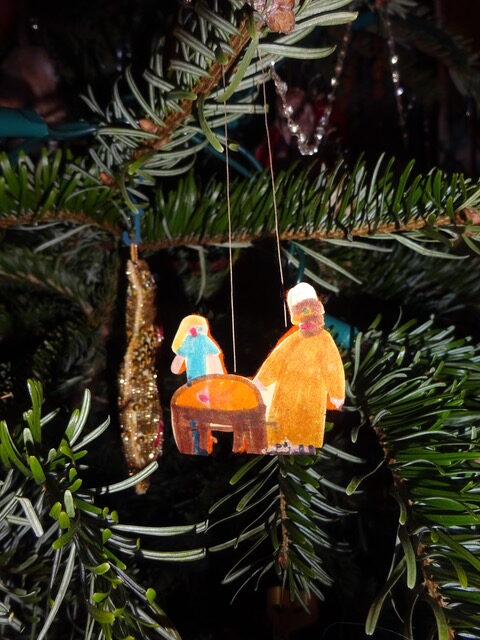
R is no longer with us, but he lives on in his books which will still be around when I am gone too. And here he is, talking about Christmas . . . in the opening words of the first chapter of his one book about books, Pharaoh’s Dream: the Secret Life of Stories.
The strangeness of finding such a thing indoors continues to cling to a Christmas tree through its life, even though the accumulation of offerings changes it from wildness into art. It is constructed from the building blocks of the universe, or at least of the imagination, reduced to doll-forms accessible to a child.
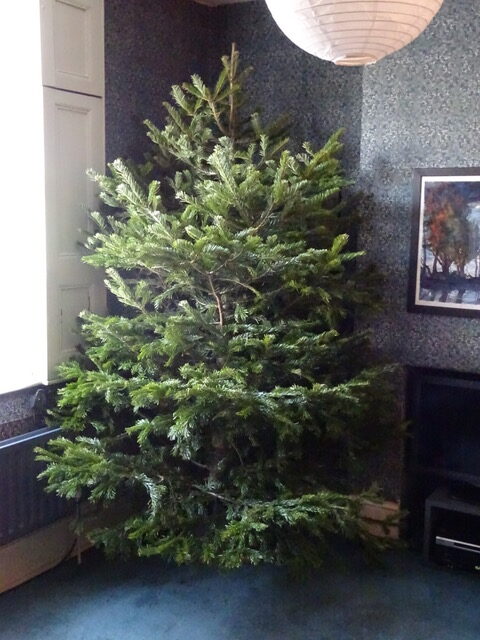
Like illustrations in a wordless book or examples in a grammar for foreigners, objects on a Christmas tree correspond to a simpler view than we usually take, as if the enterprise has caused us to ask, what comes first? and to answer: animals, birds, nuts, shells, stars, bells, hearts, spheres, adding a few parochial references to winter and plenty of shrunken versions of ourselves wearing wings or red caps.
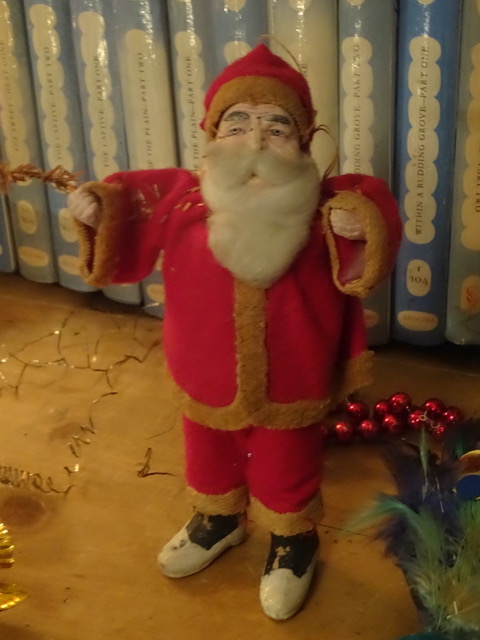
From humble origins in afternoons of glueing, tying, and stringing, these objects are raised to a consecrated state like the equipment of an Egyptian tomb, some of it usable, but not meant for our use, some of it only a replica of the usable or edible. Towards the end of the tree’s life some offerings begin to look less desirable: cranberries shrivel, popcorn shrinks, oranges turn brown or even black in places. As time goes on, children, less awed by the spectacle, take bites out of cookies or extract a toffee from its silver paper, leaving the dented husk weightless on its string.
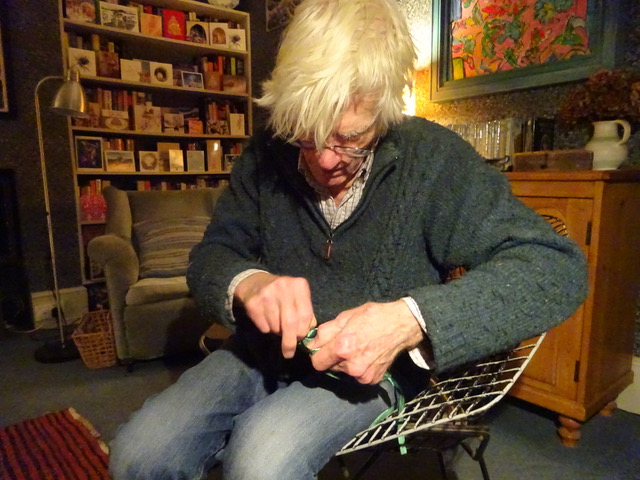
Like ex voto limbs, many of the unsightly throng on the tree commemorate specific times and persons, were made by a friend who has vanished or bought in a shop that has closed. Altogether this custom makes the most telling exposition of yearliness, of a spot returned to at unlengthy intervals to be reminded of the chain of visits stretching back into the distance. One is most lonely for the past when brought vividly into its presence like this, and the gaps between the objects only serve to heighten this private rite. They give it a kind of mosaic glitter, jumbled syllables of lost story, like Gaudi’s sinuous bench clambered over by the uncongnizant.
A crucial difference between one’s worshipful searches of a Christmas tree and the observances of primitive religion is the self-willed nature of the former, though it is true that if the tree were changed too suddenly it would lose its power like a newfangled liturgy.
However great one’s allegiance, luckily it has little chance to go stale. Like an author fearful of tiring the reader the tree-custom brings disrobing hard on the heels of dressing up. Treasured and then outcast, the tree seems an emblem of myth’s current place. Myth survives in pulverized and babified form and in two weeks feels exhausted to all of us.
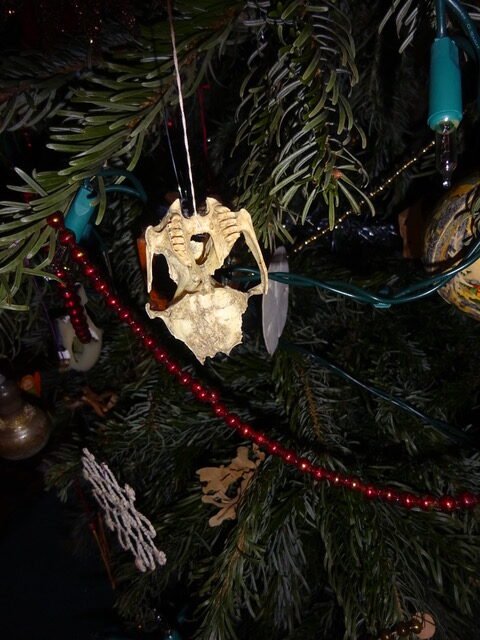
Ars longa, vita brevis